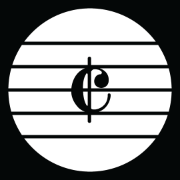Leaderboard
Popular Content
Showing content with the highest reputation on 03/28/2023 in all areas
-
Hello everyone, It's been a few months since I posted an orchestral piece, and this is the first orchestral piece I've finished in those few months. I'm trying to refocus on writing larger scale pieces because I feel that my best music emerges when I'm working in larger forms for larger ensembles. In a strange way, I just find it easier. This piece is something I sketched out over a few days and decided, on a whim, to orchestrate. The result is something I'm actually pretty happy with and am very excited to share! I did my best to link the various passages using transformations of previously stated material, and I think I was at least partially successful. Please tell me your feedback so I can improve and grow! Intrumentation: 2 Flutes 2 Oboes English Horn 2 Clarinets 1 Bassoon 2 French Horns in F 2 Trumpets in Bb 2 Trombones 1 Tuba Cymbal Timpani Tam-Tam (gong) Harp Violins 1 Violins 2 Violas Cellos Double basses Edit: I've removed the attached score and mp3 and posted a youtube video instead.2 points
-
I just finished the first movement of a new sonata. Here is the sound file and the score. The motif (the first 7 bars) of this movement has been in my head for quite a long time, and I could not get rid of it. It kept popping up all the time, so I had to do something with it. There may still be some errors in the score, and I would be grateful if you could review it. I am of course curious to find out what you think of this piece.. Best regards.2 points
-
Hi @mercurypickles, The opening wind melody with the shrieking strings is beautiful. Lovely viola countermelody in b.23 combined with the cor anglais. Lovely outburst in section E but I would want that to linger a little bit longer to give more contrast! You really love using the lowest of the oboe but maybe bassoon can be used more? The coming back of the A theme is very treasuring after all those disasters. I especially love the ending cor anglais melody with its own distinctive color. Very nice music! I think it will make a very good stand alone orchestral piece as the color in it in fascinating. It will also be a great potential symphonic movement if you can use the material in this movement and reintroduce them in later movements. For example the wind melody is very beautiful and it can act as a "last survival of purity or religiosity"? I am sure if you comment more on other members' music you will attract more feedback in your own posts as well! I see that you almost never comment on other members' music and this may result in lack of replies in you own posts! Your comments will for sure help other members improve and grow as well, and mutual growth will be fascinating! Thanks for sharing! Henry2 points
-
This is something I started working on yesterday. It's inspired by the Hans Christian Andersen story of "The Steadfast Tin Soldier". Each movement represents a different aspect of the story. I'm planning on it having seven movements in total and will update as I go (hopefully with scores). My intention is to keep each movement around 3 minutes and each one will be written in triple time (I don't write in triple time often, so it's a good challenge).1 point
-
Since Covid made singing in groups so unsafe, choirs have taken a real hit to their membership, and many are still smaller than they were before the pandemic. I wrote this piece to be performable by a small group. The range of the baritone part should be manageable by either tenors or basses, since they are generally the smallest sections in a choir, to help with balance issues. The baritone part does divide a bit for the sake of interest and to give any bass 2s a break from their high range, but as the piano and other parts are generally covering those splits, they can be done away with if a group only has a single male voice, or a conductor chooses to put all their tenors and basses on a single line to improve balance against larger soprano and alto sections. The ranges of the soprano and alto parts are also moderate enough that an alto 1 could sing soprano or a soprano 2 could sing alto in the case of unbalanced sections. I've mainly limited dynamics to mp and mf, since smaller groups are more likely to have blending and balance issues at very loud dynamics or sound timid at softer ones. I'd love to know your thoughts, particularly pianists! (I'm not a pianist). Does anything seem particularly awkward, or should be written for the other hand? Would the thorny accidentals at measure 63-64 be easier to sight-read at speed if I used the Cb and Bbb enharmonic equivalents, so those righthand notes were in paired thirds going up and down the scale? Thank you for your thoughts! Revelation 21 KJV 1 And I saw a new heaven and a new earth: for the first heaven and the first earth were passed away; and there was no more sea. 4 And God shall wipe away all tears from their eyes; and there shall be no more death, neither sorrow, nor crying, neither shall there be any more pain: for the former things are passed away. 5 And he that sat upon the throne said, Behold, I make all things new. And he said unto me, Write: for these words are true and faithful.1 point
-
I was playing Donkey Kong Country with my nephew, and it inspired me to compose a new loop pack of video game music inspired by old platformer game aesthetics, and with swing rhythms. I cut the four tunes into this reel. Two more actiony, two more mysterious and mischievous-sounding. Let me know which you like best. https://www.gamedevmarket.net/asset/sidescroller-swingin-adventure-music-pack1 point
-
Thank you Henry! I'm glad you enjoyed it. I've always loved the Bainton setting of this text, and wanted to try my own modest effort. I'm afraid I do like an abrupt and inconclusive ending. This probably says something about me psychologically. 😄 Good to hear! I wanted this piece to be possible for a wide variety of groups. I had a performance by a choir this winter that needed to make some adjustments to my piece to work for one of their basses who was singing tenor since they were short on male singers. Since that's a common problem, I thought I would write something that worked well for a group like that. Good to know nothing is too awkward. Yes, I was looking for contrast there. I wanted to give the support of a very minimal piano line, to help keep the pitch up and the rhythm true, without it being very prominent, and then build back up to more voices. Thank you! I will make that change on my final version, but leave the pdf here unedited so people reading this thread can tell what we were talking about. 🙂 Thank you for all your thoughts! I really appreciate you taking the time for discussion!1 point
-
I've been working on an all Mozart program with one of the groups I perform with, so I'm appreciating the effectiveness of frequent surprises. 🙂. I'll see if I can find time to take a look at the second movement too! Best, Maggie1 point
-
Hey @pateceramics, Thank you so much for listening and your compliments! I am really appreciated you love this movement!🥰 Haha it really takes me some hard works particularly the fast passages! The opening chorale is not easy at all since you have to bring the melody out while maintaining the harmony, but I am happy I don't play too bad! I really don't want my piece ruined by computer rendition though so I decide to play them! I am afraid it will make others feel a little bit off since most of the chorale is in legato, but thank you! Yes I should! Otherwise it can be quite repetitive. Yea that's the moment I decide to give it a go when composing! Looks like my intuition works this time! That's a good suggestion, but when I was composing then I just composed what I want without any prior planning. The upward fourths can be said to be hinted by the opening downward fourths of the opening theme but it's interpreted too much. Wow that will be quite Mahlerian there with the banger haha! I am afraid the transition will be too abrupt actually but thanks to your suggestion! Again thank you so much for your review! i do have posted the second movement here as the link is attached here also. Maybe you can have a look on it too🤔🤔🤔🤔? Henry1 point
-
Hi @Uhor, The music is quite nice even the style is not my cup of tea, as I feel there is great emotional content in it. I think you can try the contrapuntal operations since I feel like the winds are not given great significance here as they are usually paired up with the strings. Thanks for sharing! Henry1 point
-
This really does sound great! If you think well on a grand scale like this, it might be worth writing this way, and then going back and chamber-ifying your works. To have two versions, this one, and a smaller-scale one, increases your chances of being performed, since it costs thousands of dollars an hour to run a rehearsal for a group this large. A lot of successful working composers, current and historic have done that. The more groups you make your work accessible to, the better! I enjoyed this start to finish. It really does a good job evoking a mood with those high strings and mellow winds. Nice job!1 point
-
Hi Panta, The beginning of your sonata is so good! There are various exciting materials throughout the piece, which keep the listeners engaged. Also, the character of your sonata is enhanced further with excellent use of articulations and dynamics. I also adore your clever use of harmonic vocabulary, especially the interrupted cadence in bars 101-102 and the Neapolitan Sixth in bar 181. I am honestly impressed by your work, and you have done a great job recreating the classical style! However, I feel that the structure of this movement is less organized. First, the exposition is pretty short, and I expect a second theme in the dominant key (E major), which is common in piano sonatas from the Classical period. From 1:42 onwards, I hear several other themes, most not previously heard, making me wonder if this is the development section or a continuation of the exposition. Another reason that I think of this is that you included a perfect cadence at bars 54-55, seemingly concluding the exposition. Besides, near the end of the piece (starting from 4:33), I can still hear all these themes playing one after another. And the recapitulation appears to be missing: the main theme is not repeated in the end, which is not quite traditional. Nevertheless, the movement's coda is remarkable, and I really like it. Great work! Carl Koh Wei Hao1 point
-
untilThe competition has started and has been extended beyond the original deadline to run from Saturday, January 28th till Sunday, April 2nd, 2023!1 point






.thumb.png.8b5b433a341551e913a34392660bc95b.png)